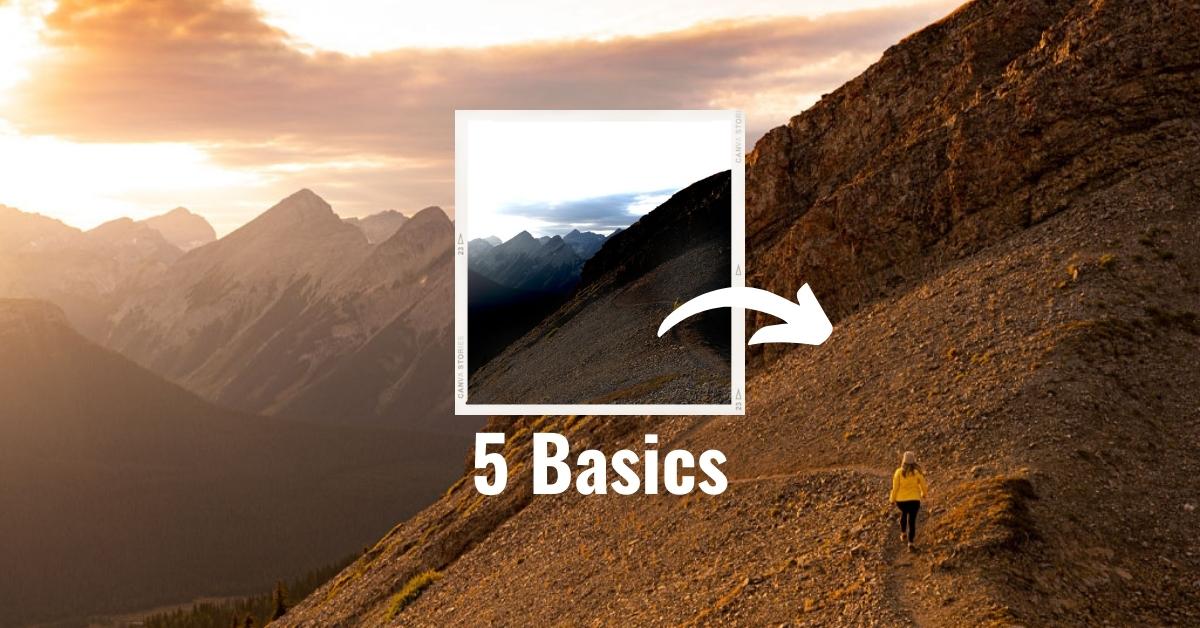In today’s digital age, photography is an art accessible to almost everyone. Whether you’re a professional photographer or just a hobbyist, understanding the basics of photo editing can take your pictures to the next level. Photo editing is not about changing the essence of an image but enhancing it to convey your intended message effectively. In this article, we will explore the five fundamental principles of photo editing that every aspiring photographer should know. So, grab your favorite image editing software, and let’s get started!
Understanding Image Formats
Before diving into the world of photo editing, it’s crucial to understand different image formats. The two most common formats are JPEG and RAW.
JPEG: JPEG files are compressed and are ideal for sharing online or printing. However, they are already processed by your camera and may lose some quality during compression.
RAW: RAW files contain unprocessed data captured by your camera’s sensor. They offer more flexibility in editing, allowing you to adjust exposure, white balance, and more without sacrificing image quality.
Color Correction and Enhancement
One of the essential aspects of photo editing is color correction and enhancement. Here are some key techniques to keep in mind:
- White Balance: Adjust the white balance to ensure colors appear natural. Correct any color casts caused by lighting conditions.
- Saturation and Vibrance: Enhance or tone down colors using saturation and vibrance adjustments. Be cautious not to overdo it, as it can result in unrealistic colors.
- Histogram: Use the histogram to evaluate the distribution of tones in your image. Balancing the histogram can help you achieve the desired exposure.
Cropping and Composition
Cropping and composition play a vital role in the overall impact of your photo. Follow these guidelines:
- Rule of Thirds: Divide your image into nine equal parts using two horizontal and two vertical lines. Place your subject or points of interest along these lines to create a balanced composition.
- Leading Lines: Incorporate leading lines in your composition to guide the viewer’s eye toward the main subject. This can create a sense of depth and movement in your photo.
- Crop with Purpose: When cropping, remove distracting elements and focus on the main subject. Experiment with different aspect ratios to find the most appealing composition.
Contrast and Brightness
Adjusting contrast and brightness can make a significant difference in your photos:
- Contrast: Increasing contrast adds definition to your image by making the dark areas darker and the light areas lighter. Be mindful not to lose details in the process.
- Brightness: Adjust brightness to control overall lightness or darkness in your photo. This can help correct underexposed or overexposed shots.
Sharpening and Noise Reduction
Sharpening enhances the details in your image, while noise reduction minimizes graininess:
- Sharpening: Use sharpening tools to make edges and details more defined. Be cautious not to oversharpen, as it can create a harsh look.
- Noise Reduction: Reduce noise in low-light or high-ISO photos to make them appear smoother. Find a balance between noise reduction and maintaining image detail.
Conclusion
Mastering the basics of photo editing is essential for anyone looking to enhance their photography skills. Understanding image formats, color correction, composition, contrast, and sharpening are key pillars to creating stunning images. With practice and experimentation, you’ll become a proficient photo editor, capable of bringing your creative vision to life. So, start editing and watch your photos transform into works of art!
FAQs
For beginners, user-friendly options like Adobe Lightroom and Canva are great choices. They offer easy-to-use interfaces and powerful editing tools.
To make your edited photos SEO-friendly, optimize the image file name, use descriptive alt text, and compress the image for web use without sacrificing quality.
While shooting in RAW provides more editing flexibility, it’s not necessary for every situation. JPEG can be sufficient for many photographers, especially beginners.
This page was last edited on 3 April 2024, at 11:42 am
